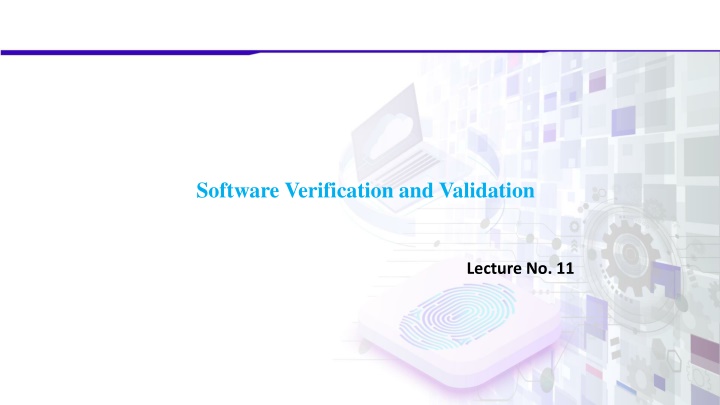Geography of China - Territory and Borders
The geographical location of China within East Asia, its vast landmass, national borders, seas, and islands. Detailed information on China's territorial waters, provinces, and key geographic features.
Download Presentation

Please find below an Image/Link to download the presentation.
The content on the website is provided AS IS for your information and personal use only. It may not be sold, licensed, or shared on other websites without obtaining consent from the author.If you encounter any issues during the download, it is possible that the publisher has removed the file from their server.
You are allowed to download the files provided on this website for personal or commercial use, subject to the condition that they are used lawfully. All files are the property of their respective owners.
The content on the website is provided AS IS for your information and personal use only. It may not be sold, licensed, or shared on other websites without obtaining consent from the author.
E N D
Presentation Transcript
Software Verification and Validation Lecture No. 11
Module 69: Confidence based testing techniques
Confidence based testing techniques Structural (coverage- based) techniques: Goodness was determined by the coverage of the product by the test set so far: e.g., % of statements or requirements tested Often based on control-flow graph of the program Three techniques: control-flow coverage data-flow coverage coverage-based testing of requirements
Confidence based techniques Confidence based methods: In coverage-based testing, we take the structure of the artifact to be tested into account In fault-based testing, we do not directly consider this artifact We look for a test set with high ability to detect faults Two techniques: Fault seeding Mutation testing
Confidence based techniques Fault seeding and mutation testing are fault-oriented techniques, applicable to all levels of testing. In Fault Seeding Technique, a predefined number of artificially generated errors is "sown" in the program code.
Confidence based techniques Whereas, in mutation testing, we sow one fault at a time leading to original program and mutant version of that program Test runs are used to detect these faults We examine ratio between actual and artificial errors based on the total number of detected errors. The testers do not know the artificially generated errors.
Module 70: Mutation Testing
Mutation Testing Mutation Testing is a testing technique that focuses on measuring the adequacy of test cases. Mutation Testing is NOT a testing strategy like path or data-flow testing. It does not outline test data selection criteria. Mutation Testing should be used in conjunction with traditional testing techniques, not instead of them.
Mutation Testing procedure insert(a, b, n, x); begin bool found:= false; for i:= 1 to n do if a[i] = x then found:= true; goto leave endif enddo; leave: if found then b[i]:= b[i] + 1 else n:= n+1; a[n]:= x; b[n]:= 1 endif end insert; n-1 2 -
Mutation Testing Let P be the original, and P the mutant Suppose we have two tests: T1 is a test, which inserts an element that equals a[k] with k<n T2 is another test, which inserts an element that does not equal an element a[k] with k<n Now P and P will behave the same on T1, while they differ for T2 In some sense, T2 is a better test, since it in a way tests this upper bound of the for-loop, which T1 does not
Mutation Testing How to use mutants in testing: If a test produces different results for one of the mutants, that mutant is said to be dead If a test set leaves us with many live mutants, that test set is of low quality If we have M mutants, and a test set results in D dead mutants, then the mutation adequacy score is D/M larger mutation adequacy score means better test set
Mutation Testing Strong vs weak mutation testing: Suppose we have a program P with a component T We have a mutant T of T Since T is part of P, we then also have a mutant P of P
Mutation Testing In weak mutation testing, we require that T and T produce different results, but P and P may still produce the same results In strong mutation testing, we require that P and P produce different results
Mutation Testing Assumptions underlying mutation testing: Competent Programmer Hypothesis: competent programmers write programs that are approximately correct Coupling Effect Hypothesis: tests that reveal simple fault can also reveal complex faults
Mutation Testing Mutation Testing: Faults are introduced into the program by creating many versions of the program called mutants. Each mutant contains a single fault. Test cases are applied to the original program and to the mutant program. The goal is to cause mutant program to fail, thus demonstrating effectiveness of the test case.
Module 71: Test and Mutation Adequacy
Test and Mutation Adequacy Test adequacy: A test case is adequate if it is useful in detecting faults in a program. A test case can be shown to be adequate by finding at least one mutant program that generates a different output than does the original program for that test case. If original and all mutants generate same output, test case is inadequate.
Test and Mutation Adequacy Mutant programs: Mutation testing involves the creation of a set of mutant programs of the program being tested. Each mutant differs from the original program by one mutation. A mutation is a single syntactic change that is made to a program statement.
Test and Mutation Adequacy Mutation adequacy: Mutation adequacy uses a similar concept to fault seeding to evaluate the effectiveness of a test suite. Assume we have a test suite TS with confidence C with total test cases c(j). Assume that the program under test P passes all the test cases c(j) for 1 <= j <= C. Can we stop testing? That is, have we tested P adequately? The mutation adequacy criterion provides one answer that we might use. The mutation adequacy approach differs from fault seeding in that it is applied at a particular point in the testing process and also in that faults are not directly inserted into P.
Test and Mutation Adequacy Mutation adequacy: Instead, a series of mutantsm(i) are created. Each mutant m(i) differs from P by the injection of exactly one fault. Let M be the total number of mutants m(i). The test suite TS is applied to each mutant m(i). If a particular mutant m(i) fails any test in c(j), then it is said to be killed. All mutants that are not killed are said to remain live at this point. The ratio of killed to total mutants (K/M) can be considered a measure of adequacy of TS.
Test and Mutation Adequacy Mutation score:mutation score for a set of test cases is the percentage of non- equivalent mutants killed by the test data. Mutation Score = 100 * D / (N - E) D = Dead mutants N = Number of mutants E = Number of equivalent mutants A set of test cases is mutation adequate if its mutation score is 100%.
Test and Mutation Adequacy Mutation operator Example: Manually creating mutants is time-consuming. A collection of mutants m(i) created from P at some point in time will no longer be representative of P after it has undergone many changes. Mutation can be automated by through the concept of mutation operators. Mutation operators are simple changes that can be made at various program locations.
Test and Mutation Adequacy Mutation operator example: The following table shows a program P to perform integer division. Given inputs x and y, P computes the integer division of x divided by y producing quotient q and remainder r. Three mutants m(1), m(2), and m(3) are shown resulting from application of the mutation operators in the previous table
Test and Mutation Adequacy Mutation testing evaluation: Theoretical and experimental results have shown that mutation testing is an effective approach to measuring the adequacy of test cases. The major drawback of mutation testing is the cost of generating the mutants and executing each test case against them.
Module 72: Fault Seeding
Fault Seeding Fault Seeding, is used to estimate the number of errors remaining in a program. In Fault Seeding Technique, a predefined number of artificially generated errors is "sown" in the program code.
Fault Seeding 1. Before testing, seed the program with a number of typical errors keeping careful track of the changes made. 2. After a period of testing, compare the number of seeded and non-seeded errors detected. 3. Before testing, seed the program with a number of typical errors, keeping careful track of the changes made. 4. After a period of testing, compare the number of seeded and non-seeded errors detected.
Fault Seeding 3. If S is the total number of faults seeded, n is the number of seeded faults detected, and N is the number of non-seeded errors detected, the number of remaining (non- seeded) faults in program is: N(S/n 1) Fault seeding as a technique introduced by Mills (1972)
Fault Seeding This helps in calculating confidence C C = 1 if n > Nand C = S/(S - N + 1) if n <N where S is the number of seeded faults, N is the total number of non-seeded (indigenous) faults which can be found We calculate N by N = S*n / s where n is actual number of non-seeded faults and s is the number of seeded faults detected during testing. Fault seeding provides an alternative to structural testing techniques providing us with a measure of sufficiency of testing or effectiveness of our test suite.
Fault Seeding One or more faults are deliberately introduced into a code base, without informing the testers. The discovery of seeded faults during testing can be used to calibrate the effectiveness of the test process. Let S is the total number of seeded faults, and s(t) is the number of seeded faults that have been discovered at time t. s(t)/S is the seed-discovery effectiveness of testing to time t. If seeded faults are assumed are to be representative of actual faults, then seed-discovery effectiveness can be assumed to be representative of overall testing effectiveness
Fault Seeding Question: Seed 100 faults into a project at time 0. Testing continues to time 30, at which point 73 of the seeded faults have been detected. If 219 actual faults were discovered, what is the expected number of total faults prior to seeding? How many latent faults are expected to remain in the software at time 30? Answers: The discovered original faults are three times the numbered of discovered seeded faults, so 300 original faults are expected. The latent faults are those remaining and not removed: (300 - 219) original faults plus (100 - 73) seeded faults, that is 81 + 27 = 108 latent faults.
Fault Seeding Fault types: Domain faults Computational faults
Fault Seeding Fault Seeding Mutation Testing v
Fault Seeding Mutation Testing Best suitable for smaller systems Critical systems Fault localization is easy Fault Seeding Economical yet fault localization is difficult
Module 73: Mutation Testing Example
Mutation Testing Example Example Code: We do two mutations One by one Therefore there are three versions, two mutants and one original code int myCompute(int a, int b) { IF (a > b) return a + b; ELSE return a b; } (a < b) (a / b)
Mutation Testing Example Three versions: int myCompute(int a, int b) { IF (a > b) return a + b; ELSE return a b; } int myCompute(int a, int b) { IF (a < b) return a + b; ELSE return a b; } int myCompute(int a, int b) { IF (a > b) return a + b; ELSE return a / b; }
Mutation Testing Example Test Output S # Test Cases (ORIGINAL CODE) Expected Actual int myCompute(int a, int b) { IF (a > b) return a + b; ELSE return a b; } 1 T1 = [{(2, 1), 3}] T2 = [{1, 2), -1}] 3 3 2 -1 -1 (MUTATION 1 (M1) S # Test Cases Expected Actual int myCompute(int a, int b) { IF (a < b) return a + b; ELSE return a b; } 1 T1 = [{(2, 1), 3}] T2 = [{1, 2), -1}] 3 1 2 -1 3 (MUTATION 2 (M2) S # Test Cases Expected Actual int myCompute(int a, int b) { IF (a > b) return a + b; ELSE return a / b; } 1 T1 = [{(2, 1), 3}] T2 = [{1, 2), -1}] 3 3 2 -1 0.5
Mutation Testing Example Mutation Score = 100 * D / (N - E) D = Dead mutants N = Number of mutants E = Number of equivalent mutants Total dead mutants = 2 Number of mutants = 2 Equivalent mutants = 0 Mutation score = 100 * 2/2 Mutation score = 100% Word about equivalent mutants
Module 74: Fault Seeding Example
Fault Seeding Example Example Code: We do fault seeding N number of faults seeded in one go Therefore there are two versions, one fault seeded and one original code int myCompute(int a, int b) { IF (a > b) return a + b; ELSE return a b; } (a < b) (a / b)
Mutation Testing Example Two versions: int myCompute(int a, int b) { IF (a > b) return a + b; ELSE return a b; } int myCompute(int a, int b) { IF (a < b) return a + b; ELSE return a / b; }
Mutation Testing Example Test Output S # Test Cases (ORIGINAL CODE) Expected Actual int myCompute(int a, int b) { IF (a > b) return a + b; ELSE return a b; } 1 T1 = [{(2, 1), 3}] T2 = [{1, 2), -1}] 3 3 2 -1 -1 Fault seeded code S # Test Cases Expected Actual int myCompute(int a, int b) { IF (a < b) return a + b; ELSE return a / b; } 1 T1 = [{(2, 1), 3}] T2 = [{1, 2), -1}] 3 2 2 -1 3
Fault Seeding Example This helps in calculating confidence C C = 1 if n > Nand C = S/(S - N + 1) if n <N where S is the number of seeded faults, N is the total number of non-seeded (indigenous) faults which can be found We calculate N by N = S*n / s where n is actual number of faults detected during testing and s is the number of seeded faults detected during testing. C = 1 since N=0, n=2 => n > N
Fault Seeding Example The difference is in the manner we execute Mutation testing Fault seeding Confidence calculation























